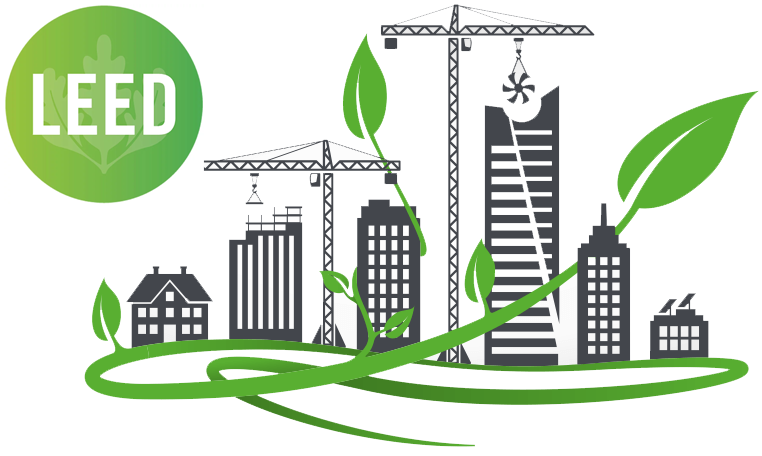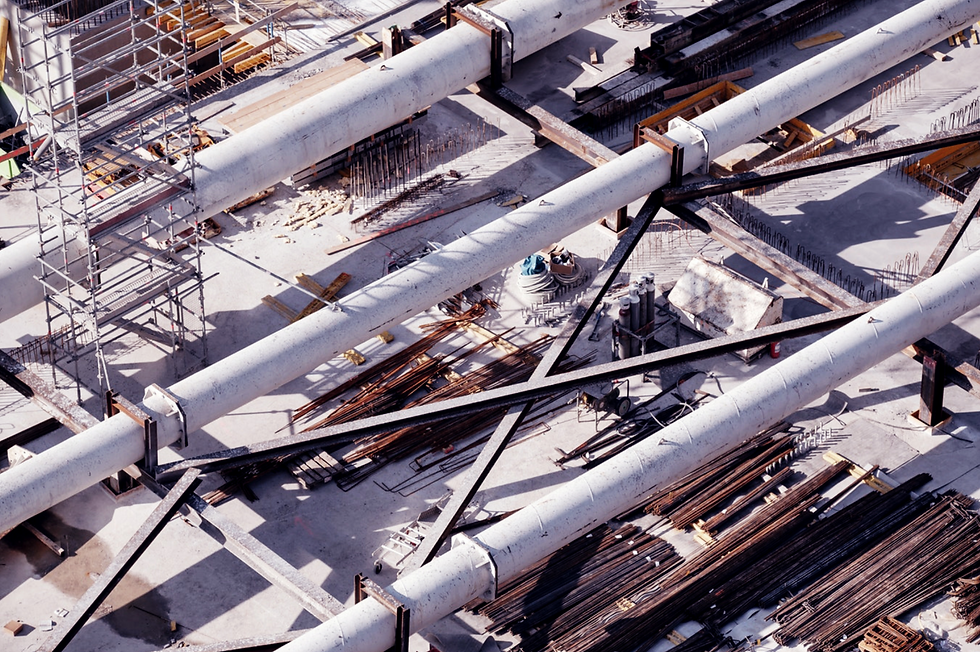The construction industry plays a vital role in shaping the built environment, and as such, it has the power to significantly impact the natural world and the communities in which it operates. In recent years, there has been an increasing focus on the environmental, social, and governance (ESG) practices of the construction industry, as stakeholders and consumers demand more sustainable and responsible building practices.
In this blog post, we will delve into the key strategies for reducing environmental impact in the construction industry, and discuss the role of industry leaders in promoting ESG practices. Through a combination of innovative technologies and conscious decision-making, we can work towards a more sustainable future in construction.
What is ESG and why is it important in construction?
ESG in construction refers to the ways in which a company or project considers the environmental, social, and governance impacts of its operations. This includes things like reducing energy and water consumption, using sustainable materials, managing waste and emissions, and engaging with stakeholders to ensure transparency and accountability.

The importance of ESG in construction cannot be overstated. With climate change and environmental degradation becoming increasingly pressing issues, it is more important than ever for the construction industry to prioritize sustainability in its operations. By reducing its environmental impact, the industry can not only do its part to protect the planet, but also save money and resources in the long run.
1. Assessing the environmental impact of construction projects
One of the first steps in implementing ESG in construction is assessing the environmental impact of a project. This can be done through a variety of methods, such as conducting an environmental impact assessment (EIA) or using sustainability assessment tools like the Leadership in Energy and Environmental Design (LEED) rating system.
An EIA is a process that evaluates the potential impacts of a proposed project on the environment, including air quality, water resources, soil, flora and fauna, and human health. EIAs are often required by law for large-scale projects, and can help identify any potential negative impacts and inform decision-making around mitigating measures.
LEED is a voluntary rating system developed by the U.S. Green Building Council (USGBC) that evaluates the environmental performance of buildings. Projects that achieve LEED certification are recognized as being designed and built with sustainability in mind, and can earn points in categories such as energy and water efficiency, materials and resources, and indoor environmental quality.

By conducting an EIA or using a sustainability assessment tool like LEED, companies and project teams can identify the environmental impacts of a project and implement strategies to minimize those impacts. This could include things like using energy-efficient materials, implementing water-saving measures, and designing for natural light and ventilation.
Assessing the environmental impact of a construction project is a crucial step in promoting sustainability and responsible building practices, and can help ensure that projects are designed and built in a way that minimizes their impact on the environment.
2. Implementing sustainable building materials and techniques
Using sustainable building materials and techniques is an important part of reducing the environmental impact of construction projects. There are many ways that companies and project teams can incorporate sustainability into their material choices, including:
-
Using recycled or reclaimed materials: Reusing materials that have already been extracted and processed can significantly reduce the energy and resources required to produce new materials.
-
Choosing locally sourced materials: Transporting materials long distances can be a significant source of greenhouse gas emissions. Choosing materials that are produced or sourced locally can help reduce the carbon footprint of a project.
-
Selecting materials with a low environmental impact: Some materials are more environmentally friendly than others, based on factors such as the energy required to produce them, the pollutants they generate, and their embodied carbon (the carbon emissions associated with their production).
-
Incorporating green building techniques: There are many building techniques that are more sustainable and environmentally friendly, such as using passive design principles to reduce energy consumption, implementing rainwater harvesting systems, and installing green roofs or walls.

By considering the environmental impact of building materials and techniques, companies and project teams can make more sustainable choices that reduce the carbon footprint of their projects.

3. Reducing energy and water consumption in construction
Energy and water consumption are two major areas where the construction industry can make a significant impact on the environment. There are many strategies that companies and project teams can implement to reduce energy and water consumption in construction, including:
-
Using energy-efficient materials and systems: Choosing materials and systems that are designed to use less energy can significantly reduce the energy consumption of a building. This could include things like energy-efficient windows, insulation, heating and cooling systems, and lighting.
-
Implementing water-saving measures: Water scarcity is a growing concern in many parts of the world, and the construction industry is a major consumer of water. Implementing measures such as low-flow fixtures, rainwater harvesting systems, and greywater reuse can help reduce water consumption in construction projects.
-
Incorporating renewable energy sources: Using renewable energy sources such as solar, wind, or geothermal energy can help reduce the carbon footprint of a building and contribute to a more sustainable energy mix.
By adopting practices that conserve energy and water in construction, companies and project teams can significantly reduce their environmental impact and play a role in building a more sustainable future.
4. Managing waste and emissions during construction
Managing waste and emissions is a crucial aspect of promoting sustainability in the construction industry. There are several strategies that companies and project teams can use to minimize these impacts:
-
Reducing waste: One of the most effective ways to minimize the environmental impact of construction is to reduce the amount of waste generated in the first place. This can be done through designing buildings to minimize waste, using materials that can be easily reused or recycled, and implementing a waste management plan to ensure that materials are properly sorted and disposed of. By reducing waste, companies and project teams can save resources and reduce the burden on landfills.
-
Implementing emission-reducing technologies: Many construction activities, such as transportation and concrete production, can generate significant emissions. By implementing technologies that reduce emissions, such as electric or low-emission vehicles and equipment, companies and project teams can significantly reduce their environmental impact. This can help reduce air pollution and contribute to a healthier environment for workers and the community.
-
Offsetting emissions: In some cases, it may not be possible to completely eliminate emissions from a construction project. In these cases, companies and project teams can offset their emissions by investing in projects that remove carbon from the atmosphere, such as reforestation or carbon capture and storage. This can help compensate for any remaining emissions and contribute to the overall goal of reducing carbon in the atmosphere.

Effective waste and emissions management during construction is essential for promoting sustainability and reducing the environmental impact of the industry. By implementing strategies such as designing buildings to minimize waste, using materials that can be easily reused or recycled, and investing in emission-reducing technologies, companies and project teams can contribute to a more sustainable future.
5. Engaging with stakeholders to promote ESG in construction
Engaging with stakeholders is an important aspect of promoting ESG in the construction industry. Stakeholders can include a wide range of individuals and groups, such as employees, customers, investors, communities, and regulatory bodies. By engaging with stakeholders, companies and project teams can ensure that their ESG practices align with the values and expectations of these groups, and can also receive valuable feedback and insights that can inform decision-making.
-
Communicating transparently: By being open and transparent about their ESG practices, companies and project teams can build trust with stakeholders and demonstrate their commitment to sustainability. This could include things like publishing sustainability reports, hosting stakeholder engagement events, and providing regular updates on ESG progress.
-
Consulting with stakeholders: Consulting with stakeholders can help companies and project teams understand the perspectives and concerns of different groups, and can inform decision-making around ESG practices. This could include things like holding focus groups, conducting surveys, and holding public meetings.
-
Collaborating with stakeholders: Collaborating with stakeholders can help companies and project teams tap into new ideas and resources, and can also help build relationships and goodwill. This could include things like partnering with NGOs or community organizations, or working with suppliers and contractors to promote ESG practices.
By engaging with stakeholders in an ongoing and meaningful way, companies and project teams can ensure that their ESG practices align with the values and expectations of key groups, and can contribute to a more sustainable future in construction.
Closing thoughts: the future of ESG in construction
The construction industry has the power to shape the built environment and significantly impact the natural world and communities in which it operates. By prioritizing environmental, social, and governance (ESG) practices, companies and project teams can build a more sustainable future in construction.
There are many strategies that companies and project teams can implement to promote ESG in construction, including assessing the environmental impact of projects, using sustainable materials and techniques, reducing energy and water consumption, managing waste and emissions, and engaging with stakeholders. By adopting these practices, the construction industry can reduce its environmental impact, save resources, and contribute to a more sustainable future.
As the focus on ESG in the construction industry continues to grow, it is more important than ever for companies and project teams to consider the environmental, social, and governance impacts of their operations. By working together, we can build a better future in construction that is sustainable, responsible, and equitable.






